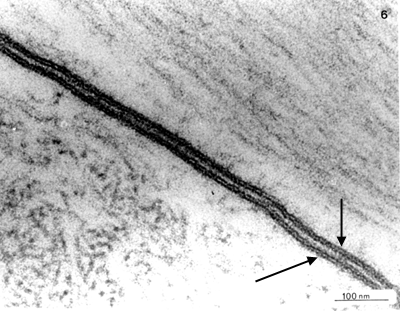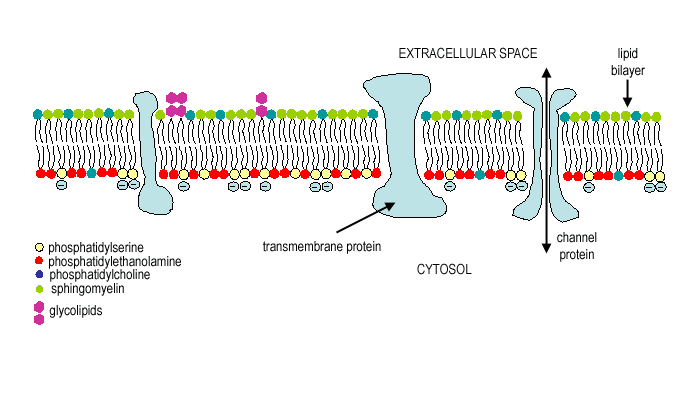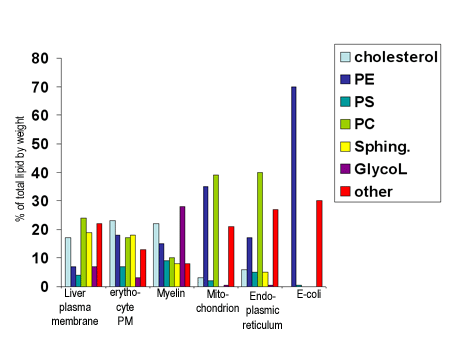Plasma Membrane
The plasma membrane acts as a dynamic interface between the cell and its surroundings. Anything entering or leaving the cell must cross this membrane, and there are various mechanisms that make this possible. In addition, the plasma membrane contains receptors that enable the cell to monitor and respond to changes occurring outside it.

This picture shows the appoised plasma membranes of two cells (indicated by the two arrows), with an intercellular space between them. Each membrane appears as two parallel electron-dense (dark) lines with a narrow gap between them.
Looking at the scale bar, can you work out what the approximate thickness of the plasma membranes is?

The diagram above shows the constituents of the plasma membrane.
The lipid bilayer of plasma membranes is composed of phospholipids, glycolipids, and cholesterol.
Phospholipids: There are four main types of phospholipids: phosphatidylcholine, sphingomyelin, phosphatidylserine and phosphatidylethanolamine. Only phosphatidylcholine carries a net negative charge, as shown, and this molecule is only found on the cytosolic side of the membrane. These four phospholipids make up about half the mass of lipid. There are other phospholipids called inositol phospholipids that are present in smaller quantities. These lipids are important in cell signalling. The lipid bilayer also contains glycolipids, and cholesterol.
Cholesterol: Eukaryotic membranes contain almost one molecule of cholesterol for every molecule of phospholipid (not shown in the diagram). Cholesterol helps to make the plasma membrane stiffer (less fluid), and helps to make the membranes permeable to small water soluble molecules.
Glycolipids: These are sugar containing lipid molecules, and they are only found on the extracellular side of the lipid bilayer.

This graph shows the contents of membranes from different cells, and cellular organelles.
In addition to the plasma membrane surrounding the cell, other membranes subdivide the interior of the cell into a number of compartments, and these membranes have similar consituents to the plasma membrane:
The Nucleus and Cellular Organelles: the Endoplasmic Reticulum (ER), the Golgi Apparatus, Mitochondria, Lysosomes, Endosomes, Peroxisomes and Secretory vesicles.